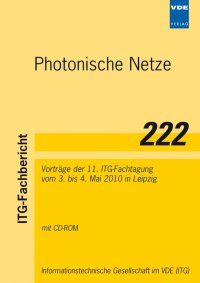Coherent Wavelength Selection for Cost Effective, Next Generation Optical Transport Networks
Conference: Photonische Netze - 11. ITG-Fachtagung
05/03/2010 - 05/04/2010 at Leipzig, Germany
Proceedings: Photonische Netze
Pages: 5Language: englishTyp: PDF
Personal VDE Members are entitled to a 10% discount on this title
Authors:
Bianciotto, A.; Veljanovski, V.; Borne, D. van den (Nokia Siemens Networks)
Abstract:
Coherent-detected Polarization-multiplexed Quadrature Phase Shift Keying (CP-QPSK) modulation format, combined with Digital Signal Processing (DSP) in the electrical domain is currently considered the most promising candidate for next generation 40 Gbit/s and 100 Gbit/s optical fiber transmission systems. The reasons for that are manyfold, among them the higher spectral efficiency and thus back compatibility with current optical networks' filtering and routing structures, the relative simplicity of the transmitter, and the fact that coherent detection of optical signals allows linear transmission impairments to be effectively compensated in the electrical domain at the receiver's side, thus allowing expensive optical components (like chromatic dispersion and polarization mode dispersion compensators) to be almost entirely removed from the link. Coherent detection also allows the de-multiplexing of wavelength division multiplexed (WDM) optical signals to be performed in the electrical domain instead of the optical domain, thus allowing further savings on optical filtering parts at the receiver's side. In this article, the potential of electrical de-multiplexing to perform the so called Coherent Wavelength Selection (CWS) will be investigated by numerical simulations.


